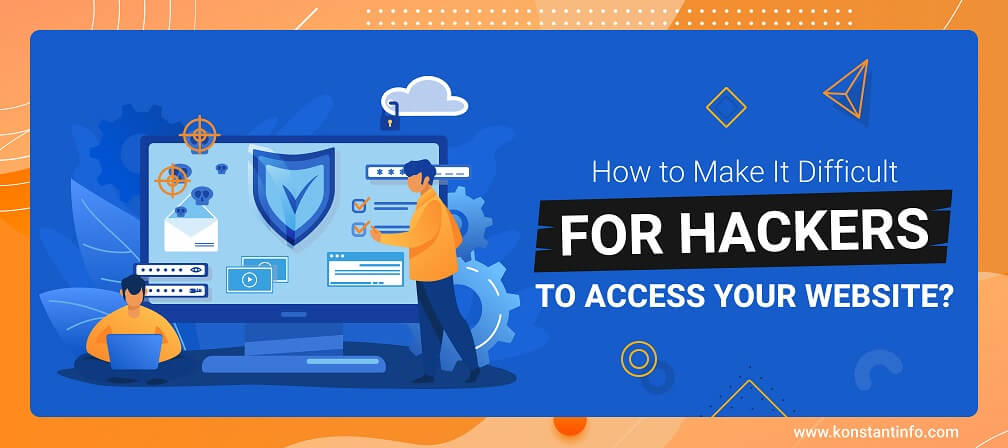Internet is crime-ridden, and not every one of us, with an online presence, is secure. We need to follow the necessary steps to decrease the chances of victimizing them.
Every business owner owns a company website, but it is not that simple to secure it. Or otherwise, not everyone has the right tools or mindset to know what it takes to safeguard a corporate website that protects user data and financial information.
Hackers have been perching on content management systems like WordPress – a blogging platform by business owners. Also, Laravel platforms became popular, which led hackers to take advantage of the template-based and custom websites to steal data from business owners – unaware of the security measures necessary to protect their online assets.
Securing your favourite IDE – Android Studio, Visual Studio, VS Code, IntelliJ, Eclipse, and X Code, becomes tricky. Often, companies that build original websites with content management systems (CMS) require ‘code’, and development for additional security; It helps them abstain from the chances of cyber-security attacks in future.
Vulnerabilities: How Can You Identify A Security Breach?
A cybersecurity breach cannot be repetitive. Conforming to the adage, “Once bitten twice shy” once to straighten your boundaries, you won’t want any bystanders to intrude. There are several common ways that hackers infiltrate a website. Hackers seek:
- Personal data revealing racial or ethnic origin
- Political Opinions
- Religious
- Philosophical Beliefs
- Trade-union membership
- Genetic data
- Biometric data is processed solely to identify a human being
- Health-related data
Let’s discuss:
- Scenario 1: Someone can seek information out on your current services because their previous website code had been hacked and alter it so that the website redirects to an adult entertainment site. If a user types this company’s domain name into their browser, the alternate website would appear.
- Scenario 2: If a company experiences issues with its website loading, it is pretty much possible that someone has inserted malicious files that copied themselves over and over, leading to lags and connection issues.
- Scenario 3: A software as a service (SaaS) company that allows customers to set up user accounts on its website gets infected by a malicious bot, which begins creating thousands of fake accounts, leading to issues with the server and impacting the site loading speed.
Such issues are annoying and can seriously harm a company’s reputation, churning its motto. Small businesses are more vulnerable as their setup is usually based upon CMS, and they often lack appropriate support to resolve such emergency issues.
Types of Cyber Attacks
It can be via – (1) SQL Injection, (2) Path traversal, (3) OS Command Injection, (4) IDAP Injection, (5) NoSQL Injection, (6) Local File Inclusion, (7) Deserialization of untrusted data.
When an application, organization entity inadvertently exposes personal data, it could lead to weak encryption, no encryption, software flaws, and database mismatch. It leads to ‘exposing’ personal information. To prevent this from happening, organizations require using unique and complex passwords for all online accounts – Monitor their bank and other financial ‘accounts’ – Frequently check their credit report – Make use of secure URLs. Implement high-quality security software. Consider an identity theft protection or credit monitoring service.
Cross-site scripting (XSS) attacks
It enables attackers to inject malicious code/scripts into existing website code. It bypasses access controls.
It takes over multiple accounts, allowing an attacker to access all the internal files without appropriate authentication. It bypasses – keys or session tokens, passwords, user account information, and other details to assume user identities.
Security Misconfiguration
It is a security failure when servers or a web application fail to respond. It occurs in-absence-of implementing appropriate security controls or doing so with errors.
In this case, users are not able to act according to their will. They get access to only a part of the website. It leads to unauthorized disclosure of information, modification or destruction of data.
Insufficient logging and monitoring
It happens in-absence-of proper monitoring when the system stays awake even after a security breach.
XML external entities (XXE)
In this case, hackers exploit the XML and use it against web applications that process XML inputs. Attackers supply XML with DOCTYPE definitions to perform attacks like denial of service, remote code execution, or server-side request forgery (SSRF).
Security Tips: How to Secure a Website?
You should consider these security best practices to secure a website against cyber-attacks:
- Host your website on a secure server with an SSL certificate – Collect private information from your potential niche audience. Secure a Hypertext transfer protocol that prevents data interception. And you require SSL to encrypt information. It establishes a secure and encrypted connection between your website and a visitor’s web browser. If your website uses logins, processes payments, or uses cookies to store personal information, SSL is mandatory from most compliance standpoints. It assures every visitor that you take their privacy seriously.
- Make sure that you use strong passwords – It requires you to insist all your users use complex passwords when signing into your site to prevent your account from being hacked. It can be a combination of uppercase alphabets + lowercase alphabets + numbers + special characters in their passwords.
- Ensure that you have a firewall – A firewall shields your internal network from viruses. It automatically blocks redundant internet protocol (IP) addresses, preventing spammers and hackers from registering multiple accounts from the same computer.
- Require Custom Coding – If your website uses CMS – it is susceptible to frequent breaches. Get some secure HTTPS and SSL codes done.
- Update your plugins – Keep your plugins and software updated to bump off the possibility of cyberattacks on your website.
- Backup your website, local and offsite – Restoring your website is the first step that you should take. Ensure that your host server is being backed up daily, and make sure your webmaster is retaining copies of your site locally as an extra precaution.
- Call a reputable hosting provider – Every hosting provider has its unique offerings. Several discount web hosting agencies don’t make adequate investments into security. Let your hosting provider inform you about how they can protect your website. Ensure that they make regular software updates to the server operating system and other related software. They must proactively scan and address security issues. No need to invest millions into security; keep the basics in check.
- Manage User Access – Watch out for who accesses your network, who should be allowed, and who is trying to intrude. Every user should be authorized and authenticated.
- Communicate with your team – Let your teams know about phishing attacks. Reinforce such meetings by highlighting the consequences of these attacks and what security measures you are taking to avoid such circumstances in future.
- Change your passwords regularly – It is as simple as it sounds. A combination of capital alphabets, small alphabets, numbers, special characters defends hackers.
- Use different passwords for all accounts – Never use the same password for all your digital access points. Differentiate your computer password from your email password from your hosting and website dashboard. If someone gets hold of anyone, they will not be able to access any customer data.
- Use Multi-Factor Authentication – Mandate that new sign-ins should require a phone number, email or backup code for signing in. It is unlikely that the hackers will be able to access the secondary device.
- Install Software that You Trust – Download and install software from a trustworthy source. Look for a green lock and HTTPS in the address bar in your web browser before downloading it.
- Use tools to manage passwords – It auto-generates complex passwords.
- Limit Employee Access To Sensitive Information – Allow only the most trustworthy employees to have login credentials to access any sensitive data and ensure that you delete all company accounts for outgoing employees after they’ve left. Let’s not allow unhappy employees to jeopardize sensitive documents.
- Use an Anti-Phishing Toolbar – It checks everything that is clicked in real-time and blocks any possible threats or attacks. It especially helps people who wish to secure data but don’t know relevant techniques to do so.
- Follow best practices – (1) Cover your webcam when not in use, (2) Use bookmarking for sites that you often visit – it reduces the chances of landing on a lookalike site, (3) While signing in, closes all other browsers – tabs, (4) Don’t store passwords in your browser or on websites, (5) Anything connected with your account like smart home -smart TV – a smart refrigerator can be hacked, without your notice.
How Much Does It Cost To Secure A Website?
The cost to secure a website depends upon the cost of software upgrades, the technology stack and the web platform, the tools, integrated development environment and database. It also includes the cost to purchase hosting, domain and testing tools.
Conclusive
As you plan to have a small – comprehensive website of your own, you imagine it to showcase your offerings and simultaneously bring your business a step closer to your target audience. But that small website requires a set of essential features for its safety and to avoid any intrusion. If built with CMS and third-party plugins, it is risky. A cybersecurity breach can negatively affect your business operations. And you might take days – weeks – months to recover.
But, if you do not have the resources to bring your operations back to business, you might require complete redesigning and redeveloping, which will also cut your business revenue. While there is no sure-short way, you might custom code as the best security measure to protect your website from hacking attacks. Let our web developers help you in securing your website; contact us!
About Author
Vipin Jain is the Co-Founder and CEO at Konstant Infosolutions and is in charge of marketing, project management, administration and R&D at the company. With his marketing background, Vipin Jain has developed and honed the company’s vision, corporate structure & initiatives and its goals, and brought the company into the current era of success.



